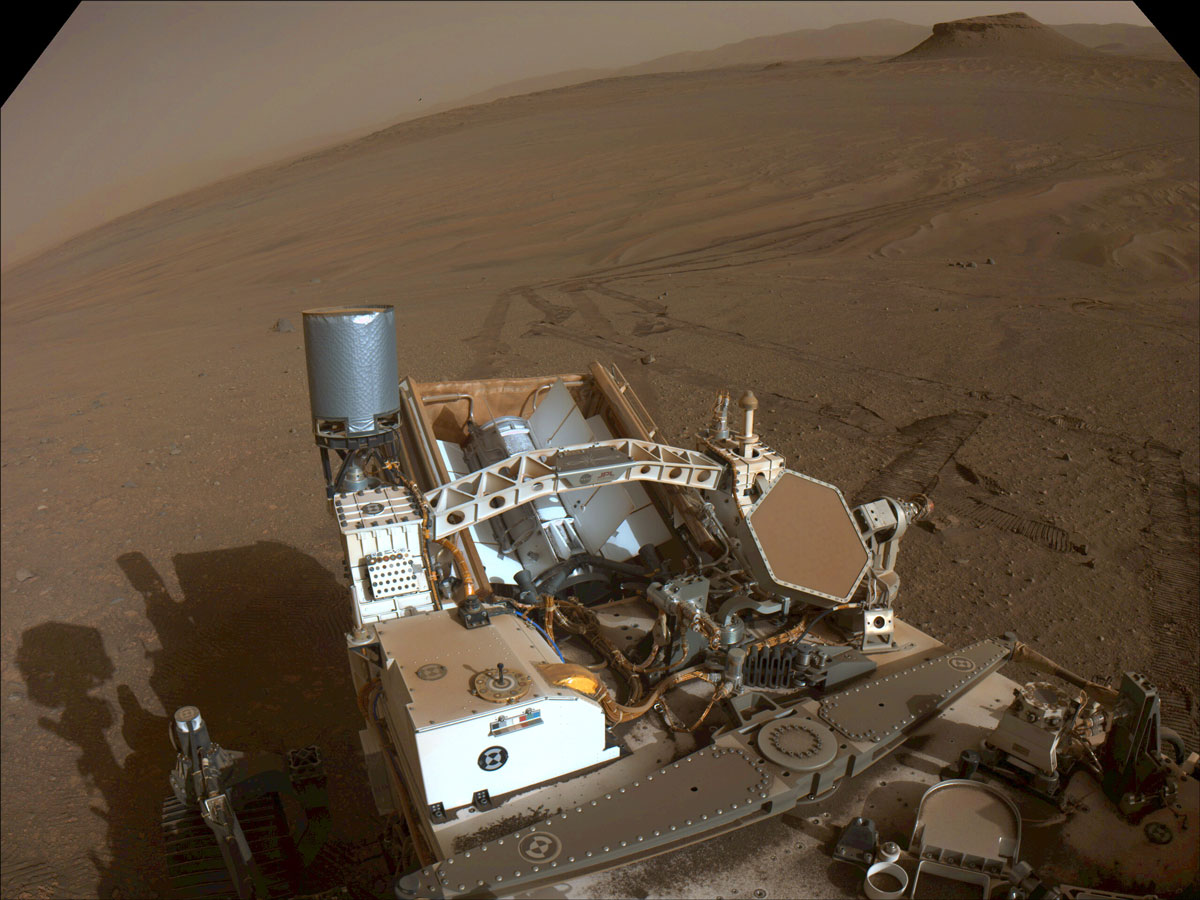Perseverance Science Objectives
To contribute to the four Mars exploration science goals and meet its specific goal of determining Mars' habitability, Perseverance has the following science objectives:
Overview
Perseverance is taking the next natural step in Mars exploration. It is looking for places in Jezero Crater that were habitable in the distant past, asking whether life ever existed there, and looking for signs of ancient life. Perseverance is also studying the evolution of Mars’ climate, surface, and the interior of the planet. The rover is also testing technologies for future human exploration of Mars. In addition to these science goals, Perseverance has a unique goal of collecting and caching samples of Mars material for possible future return.

Geology
To meet its this objective, Perseverance is:
- Studying the rocks and landscape at Jezero Crater to reveal the region’s history.
- Studying the area to understand its historical climate and environment.
- Characterizing the processes that formed and modified the geologic record within a field exploration area on Mars selected for evidence of an astrobiologically relevant ancient environment and geologic diversity.
This information piece together a larger picture of what Jezero Crater was like in the ancient past. It helps tell us what the climate was like there, whether the delta and lake settings were friendly to life, and for how long.
Astrobiology
As the rover explores Jezero Crater, it searches for areas that were particularly friendly to life, and there, the team looks for deposits that could have preserved signs of ancient microbial life. We do not yet know whether Perseverance will find this evidence of past life, but if it exists, the rover has the right tools to look for it.
The rover performs the following astrobiologically relevant investigations on the geologic materials at Jezero Crater:
- Determine the habitability of an ancient environment.
- For ancient environments interpreted to have been habitable, search for materials with high biosignature preservation potential.
- Search for potential evidence of past life using the observations regarding habitability and preservation as a guide.
Sample Caching
Perseverance is caching, or storing, samples for possible future return to Earth. The rover has 38 empty tubes in which it can store samples of Mars rock and soil. By the end of its mission, it will collect approximately 30 samples.
The rover is:
- Obtaining the most promising samples that represent the geologic diversity of the landing site, and document the context of those samples thoroughly.
- Ensuring compliance with future needs in the areas of planetary protection and engineering so that the cached samples could be returned in the future if NASA chooses to do so.
Preparation for Humans
Perseverance is preparing for future human exploration of Mars, by testing technologies that would help sustain human presence.
- Demonstration of In-Situ Resource Utilization technologies would enable propellant and consumable oxygen production from the Martian atmosphere for future exploration missions.
- Characterization of atmospheric dust size and morphology to understand its effects on the operation of surface systems and human health.
- Surface weather measurements to validate global atmospheric models.
- A set of engineering sensors embedded in the Mars 2020 heat shield and backshell to gather data on the aerothermal conditions, thermal protection system, and aerodynamic performance characteristics of the Mars 2020 entry vehicle during its entry and descent




